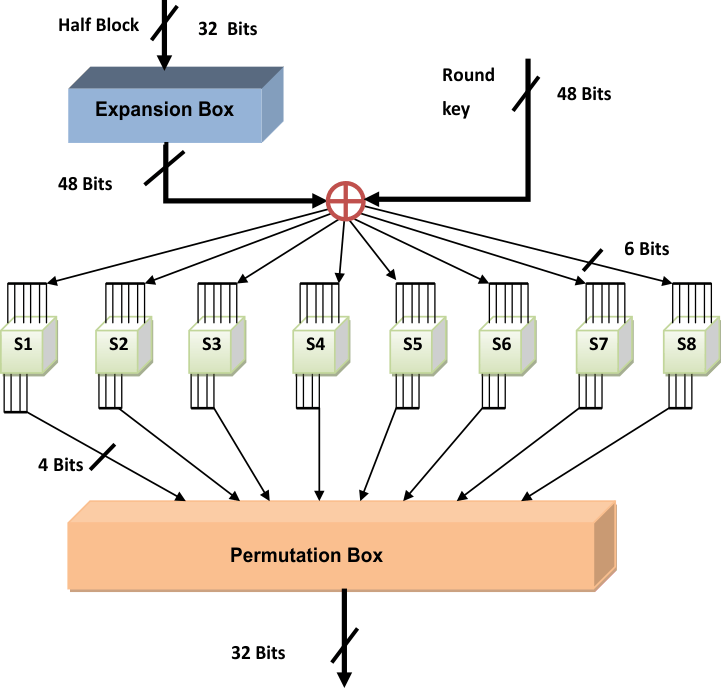SLAA547C July 2013 – July 2021 MSP430FR5739
4.2.2 The Function Block
The function block begins by expanding a 32-bit half block to 48 bits as shown in Figure 4-10.
 Figure 4-10 DES Function Block
Figure 4-10 DES Function BlockThe expanded block is then XORed with the round key. The resultant is the split into 6-bit increments and passed through eight S-boxes, with the six MSb going through S1 and the six LSb through S8. The S-boxes give 4-bit results which are concatenated (S1+S2+S3+S4+S5+S6+S7+S8) and sent through a 32-bit permutation box.